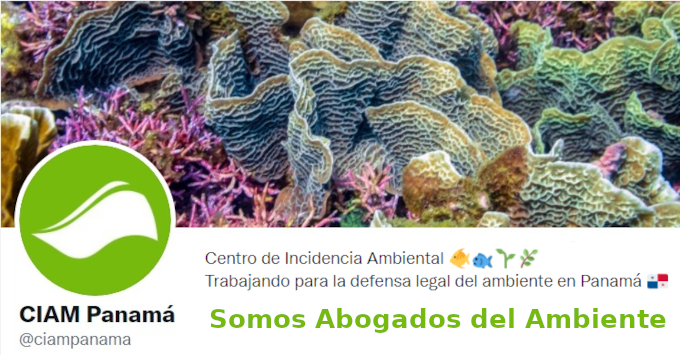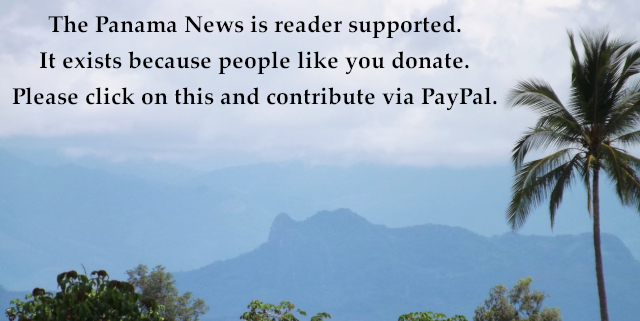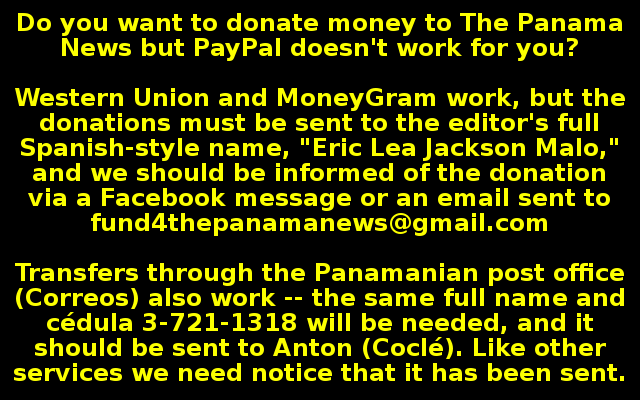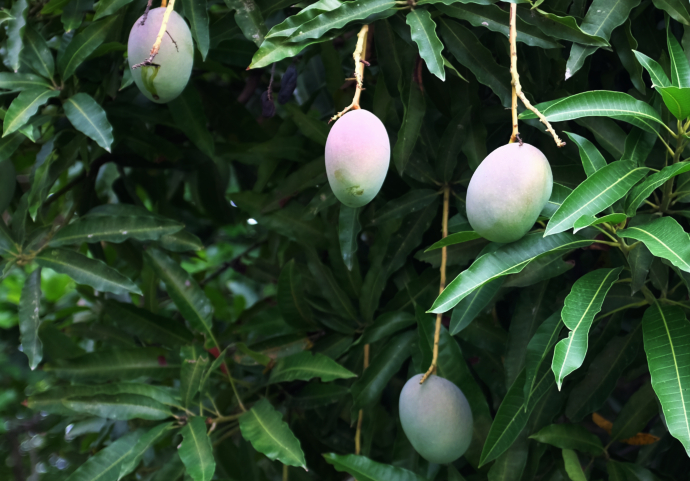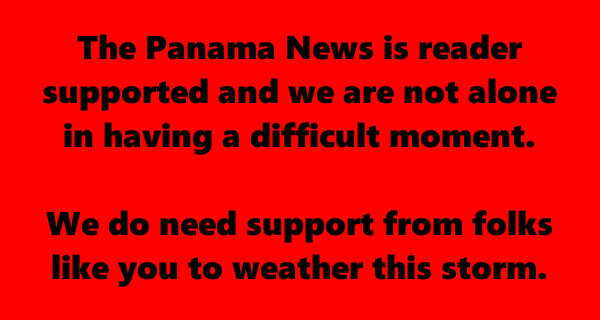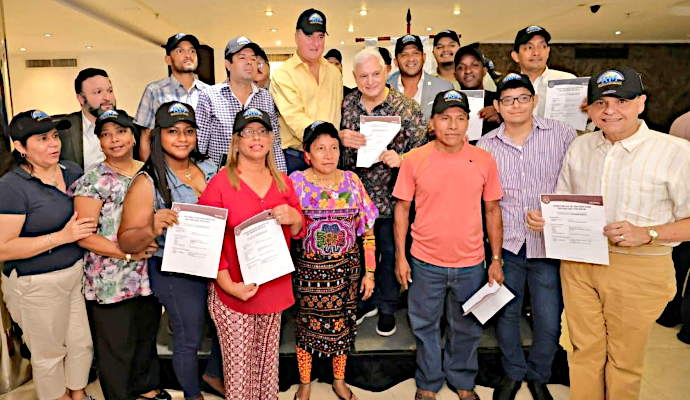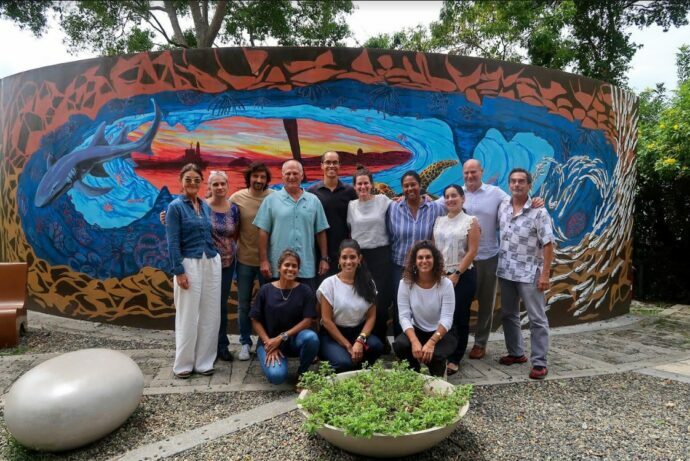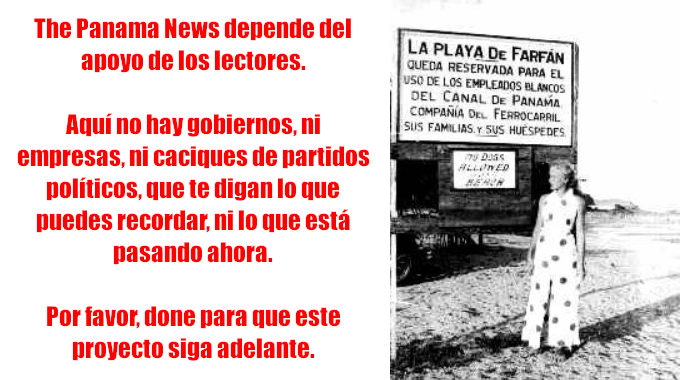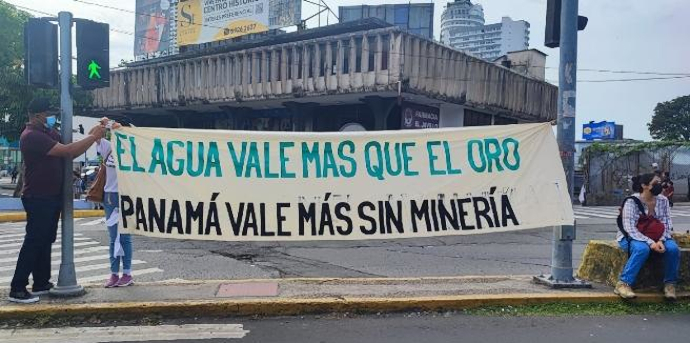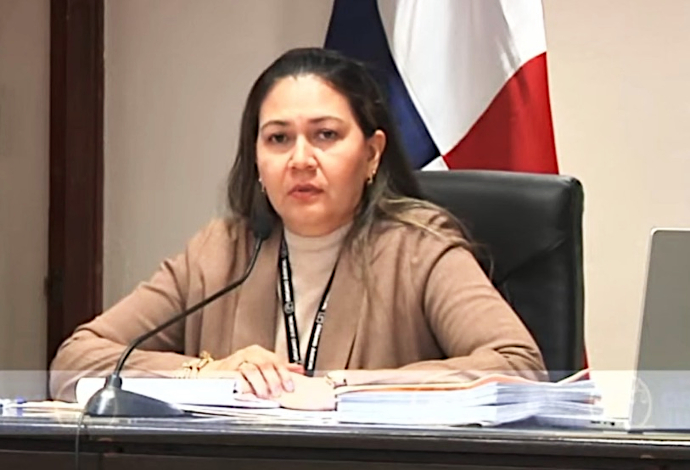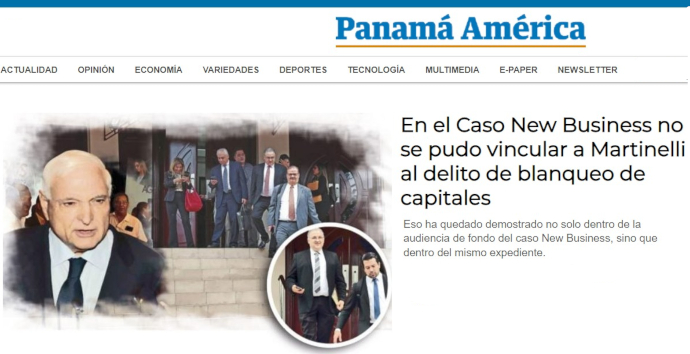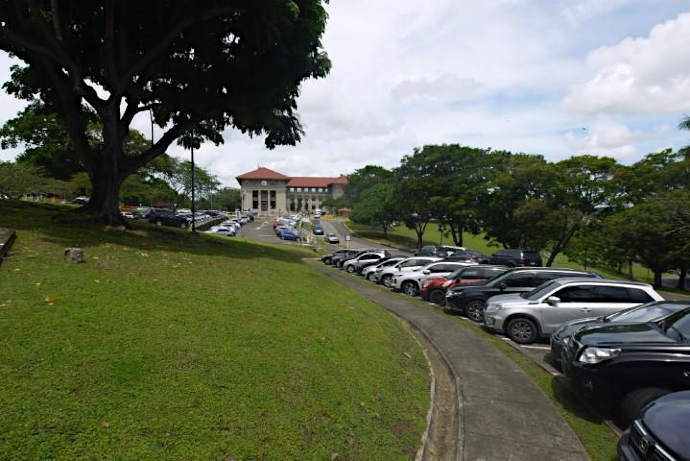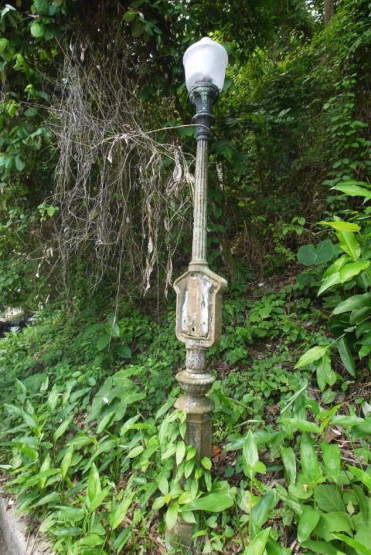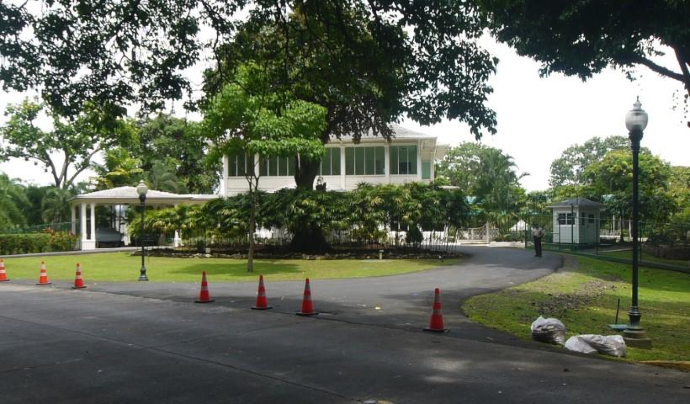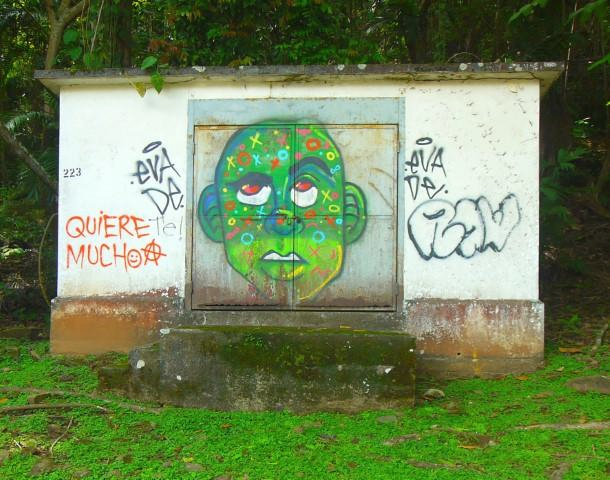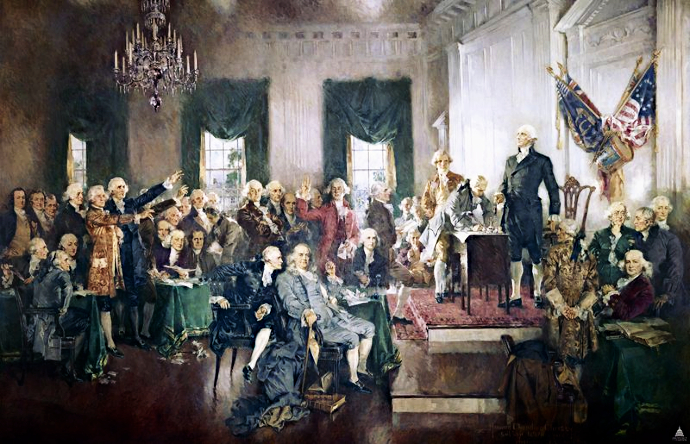Investigadores multidisciplinarios de los trópicos del mundo publican un nuevo artículo en el que sugieren que la clave de la conservación de los océanos puede encontrarse en la mayoría tropical.
Una perspectiva tropical sobre la conservación marina
por STRI
Para lograr soluciones tangibles para la conservación de los océanos, debemos escuchar a las personas más afectadas por los problemas actuales que enfrentan los océanos: los habitantes de los trópicos, afirman 25 coautores de “Engaging the Tropical Majority to Make Ocean Governance and Science more Equitable and Effective”, un nuevo artículo publicado en la revista Ocean Sustainability, financiado por el Instituto Smithsonian de Investigaciones Tropicales (STRI).
“No podemos realmente hablar del océano sin hablar de la naturaleza y los seres humanos”, dijo la científica del STRI y directora fundadora de la Iniciativa Adrienne Arsht de Soluciones Comunitarias de Resiliencia, Ana Spalding, autora principal junto con la ecóloga marina y profesora asociada de la Universidad Estatal de Oregón (OSU) Kirsten Grorud-Colvert. “Kirsten y yo hemos trabajado juntas para unir esos dos aspectos”.
El propósito del artículo era aprovechar la atención prestada a los trópicos a raíz de la conferencia Our Ocean, que se celebró en Panamá en marzo de 2023. Spalding y Grorud-Colvert reunieron a un grupo de investigadores multidisciplinarios provenientes de los trópicos globales para debatir soluciones prácticas para la conservación de los océanos. Después de las reuniones iniciales de intercambio de ideas en Zoom, organizaron un taller en persona para redactar el artículo preliminar con un grupo central de colaboradores en noviembre de 2022 en el Centro Natural Punta Culebra de STRI en Ciudad de Panamá.
El objetivo era debatir cómo hacer frente a los problemas más urgentes que afectan a los océanos, especialmente en los trópicos globales. Sin embargo, en lugar de centrarse únicamente en el aspecto científico de la conservación marina, un tema común durante los debates iniciales fue la desigualdad en la gobernanza de los océanos y la ciencia oceánica.
“El tono subyacente era que los cambios sistémicos en inequidad y acceso eran importantes”, dijo Spalding. “Todavía incorporamos el aspecto científico más técnico, pero de eso ya se ha escrito, ya se ha hablado de ello. Decidimos dar prioridad a este tema”.
Los trópicos albergan la mayor parte de la biodiversidad marina del mundo y la mayoría de las personas que dependen directamente del océano. Pero la gobernanza de los océanos sigue estando dominada por países de altos ingresos de las regiones templadas, de donde proceden la mayoría de los conocimientos científicos y la financiación. Las políticas son establecidas de forma desproporcionada por autoridades fuera de las regiones tropicales.
“Queríamos reconocer esta inequidad desde el principio, que la mayor parte de los recursos y financiación para la conservación marina proceden de regiones templadas, lo que a menudo lleva a que esos intereses acaparen las conversaciones. A partir de ahí podemos avanzar, con las voces y los conocimientos tropicales a la cabeza”, señaló Grorud-Colvert.
En el documento, los autores concluyen que, para lograr soluciones reales y tangibles para la sostenibilidad de los océanos, hay cuatro acciones clave que deben llevarse a cabo en primer lugar: la equidad en la ciencia y la gobernanza de los océanos, la reconexión de las personas y el océano, la redefinición de la alfabetización oceánica y la descolonización de la ciencia oceánica.
“El artículo subraya que el problema no son sólo los cambios en los ecosistemas naturales, los peces y los manglares, sino el impacto desproporcionado que esos cambios tienen en determinados grupos de personas, especialmente en los trópicos. Y no vamos a ver cambios en la naturaleza hasta que veamos cambios sistémicos en cómo la gente de estas regiones puede participar, comprometerse, sentirse conectada con los problemas y sentirse responsable de estos cambios”, declaró Spalding.
“Tenemos que ir más allá de hablar de los problemas y pasar a actuar intencionadamente para abordar las inequidades”, afirmó la coautora Sangeeta Mangubhai, investigadora científica de Talanoa Consulting, en Fiyi. “Es hora de valorar y confiar en el profundo conocimiento y comprensión de la historia y el lugar que tenemos los que formamos parte de la mayoría tropical y dejarnos tomar la iniciativa en aquellos lugares que llamamos hogar”.
“La conclusión en la que me gustaría enfocarme es la descolonización de la ciencia oceánica, desde quién la dirige hasta cómo se hace. Esta acción es relevante para todas las escalas y dimensiones de la conservación de los océanos: de los individuos a las instituciones, de la teoría a la práctica, y de nuestros jóvenes a nuestros mayores”, comentó el coautor Steven Mana’oakamai Johnson, del Departamento de Recursos Naturales y Medio Ambiente de la Universidad de Cornell.
Spalding y Grorud-Colvert se comprometieron a crear un espacio para escuchar y cuestionar perspectivas e ideas. “No podemos encontrar soluciones sin conversaciones abiertas, honestas y transdisciplinarias, y sin asegurarnos de que estamos creando espacios para que esto ocurra”, añadió Grorud-Colvert.
A pesar de las diferencias horarias y culturales, los colaboradores se sorprendieron al comprobar que sus experiencias no eran muy distintas.
“Es sorprendente cómo las experiencias compartidas llevan a la cocreación de soluciones para los trópicos globales. Tanto en Asia Oriental y el Pacífico como en África y América Latina, todos sentimos cosas similares, y nos sentimos validados por la gente de estas regiones”, dijo Spalding.
“Amplificar la voz de la mayoría tropical en la ciencia y la gobernanza de los océanos es clave para garantizar que las decisiones relacionadas con los trópicos incluyan las perspectivas de los actores clave de los trópicos”, declaró la coautora Josheena Naggea, del Departamento de Océanos y Centro de Soluciones Oceánicas de la Universidad de Stanford.
“Los líderes científicos actuales tienen que darse cuenta de que los científicos de los trópicos han sido en su mayoría ignorados o marginados durante mucho tiempo y, sin embargo, estamos produciendo conocimientos esenciales, y a menudo de forma mucho más equitativa”, afirmó el coautor Andrés Cisneros-Montemayor, director adjunto de Ocean Nexus y profesor asociado de la Universidad Simon Fraser.
Por su parte, la investigadora y coautora Estradivari, del Departamento de Ecología del Centro Leibniz de Investigaciones Marinas Tropicales (ZMT) de Alemania, afirmó: “Aunque existen inequidades reales en la gobernanza y la ciencia oceánicas que pueden tener efectos negativos en la conservación de los océanos, también hay soluciones disponibles siempre que valoremos la diversidad y la flexibilidad y aprovechemos las oportunidades de cambio.”
Referencia: Spalding, A. K., Grorud-Colvert, K., Allison, E., Amon, D. J., Collin, R., de Vos, A., Friedlander, A. M., Johnson, S. M., Mayorga, J., Paris, C. B., Scott, C., Suman, D. O., Cisneros-Montemayor, A. M., Estradivari, Giron-Nava, A., Gurney, G. G., Harris, J. M., Hicks, C., Mangubhai, S., Micheli, F., Naggea, J., Obura, D., Palacios-Abrantes, J., Pouponneau, A., Vega Thurber, R. (2023). Engaging the Tropical Majority to Make Ocean Governance and Science more Equitable and Effective. Ocean Sustainability. doi: 10.1038/s44183-023-00015-9. https://www.nature.com/articles/s44183-023-00015-9
En la foto arriba: Durante los talleres presenciales de redacción en el Centro Natural de Punta Culebra, en Ciudad de Panamá (Panamá). Arriba, de izquierda a derecha: Claire Paris-Limouzy, oceanógrafa biológica y profesora de la Universidad de Miami; Rachel Collin, directora de la Estación de Investigación de Bocas del Toro del STRI; Juan Mayorga, científico especializado en datos marinos e investigador afiliado de la Universidad de California en Santa Bárbara; Alan Friedlander, científico jefe del programa Pristine Seas de la National Geographic Society e investigador de la Universidad de Hawai; Steven Mana’oakamai Johnson, profesor adjunto de la Universidad de Cornell; Kirsten Grorud-Colvert, profesora asociada de la Universidad Estatal de Oregón; Cinda Scott, bióloga marina y directora de School for Field Studies de Bocas del Toro; Tania Romero, jefa del laboratorio de Rachel Collin en el STRI; Edward Allison, director científico de WorldFish; y Daniel Suman, profesor de política marina y gestión costera de la Universidad de Miami. Abajo, de izquierda a derecha: Asha de Vos, bióloga marina y fundadora de Oceanswell; Ana Spalding, científica del STRI y directora fundadora de la Iniciativa Adrienne Arsht de Soluciones Comunitarias de Resiliencia; y Diva Amon, bióloga marina y fundadora y directora de SpeSeas. Foto por Vanessa Crooks — STRI.
Contact us by email at / Contáctanos por correo electrónico a fund4thepanamanews@gmail.com
To fend off hackers, organized trolls and other online vandalism, our website comments feature is switched off. Instead, come to our Facebook page to join in the discussion.
Para defendernos de los piratas informáticos, los trolls organizados y otros actos de vandalismo en línea, la función de comentarios de nuestro sitio web está desactivada. En cambio, ven a nuestra página de Facebook para unirte a la discusión.
~ ~ ~
These announcements are interactive. Click on them for more information.
Estos anuncios son interactivos. Toque en ellos para seguir a las páginas de web.


